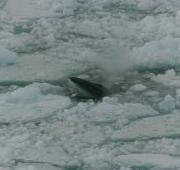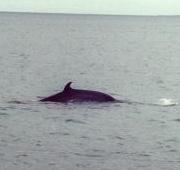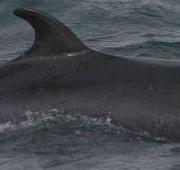 There are two recognised subspecies of minke whale, the common minke whale and the larger Antarctic minke whale, both however are classified as baleen whales meaning that minke whales filter food from the water rather than biting it.
There are two recognised subspecies of minke whale, the common minke whale and the larger Antarctic minke whale, both however are classified as baleen whales meaning that minke whales filter food from the water rather than biting it. The common minke whale (dwarf minke whale) is generally found in the North Atlantic Ocean and also parts of the North Pacific Ocean. The common minke whale (dwarf minke whale) is the smaller of the two minke whale subspecies with adult common minke whales reaching about 5 m in length.
The common minke whale (dwarf minke whale) is generally found in the North Atlantic Ocean and also parts of the North Pacific Ocean. The common minke whale (dwarf minke whale) is the smaller of the two minke whale subspecies with adult common minke whales reaching about 5 m in length.

Despite the clear division of the two minke whale species territories, it is not uncommon for the common minke whale to be found in the waters of the southern hemisphere although the Antarctic minke whale is rarely found too far north. The reason behind this is thought to be because the common minke whale can survive in more temperate waters, where the Antarctic minke whale prefers to inhabit the more frozen ones.
The minke whale has a carnivorous diet, as the minke whales filters to water in the oceans to extract nutrients from it. Amongst the most common minke whale meals are krill and plankton, but minke whales will often eat small fish and crabs. As the minke whale is a type of baleen whale, the minke whale does not have teeth as such. The tiny bristle like teeth in the mouth of the minke whale means that the minke whale cannot really bite down on food, so the minke whale uses its teeth to filter food particles out of the water.
Minke whales tend to breed in the late winter to early spring, with minke whale breeding occurring near the surface of warmer waters. The gestation period is about 10 months and the calf is born near the surface of warm, shallow waters. The newborn minke whale calf is able to swim to the surface of the water within 10 seconds for its first breath with a little help from its mother who uses her flippers to guide the minke whale calf to the surface. Minke whales calves are usually able to swim within their first half and hour of life.

